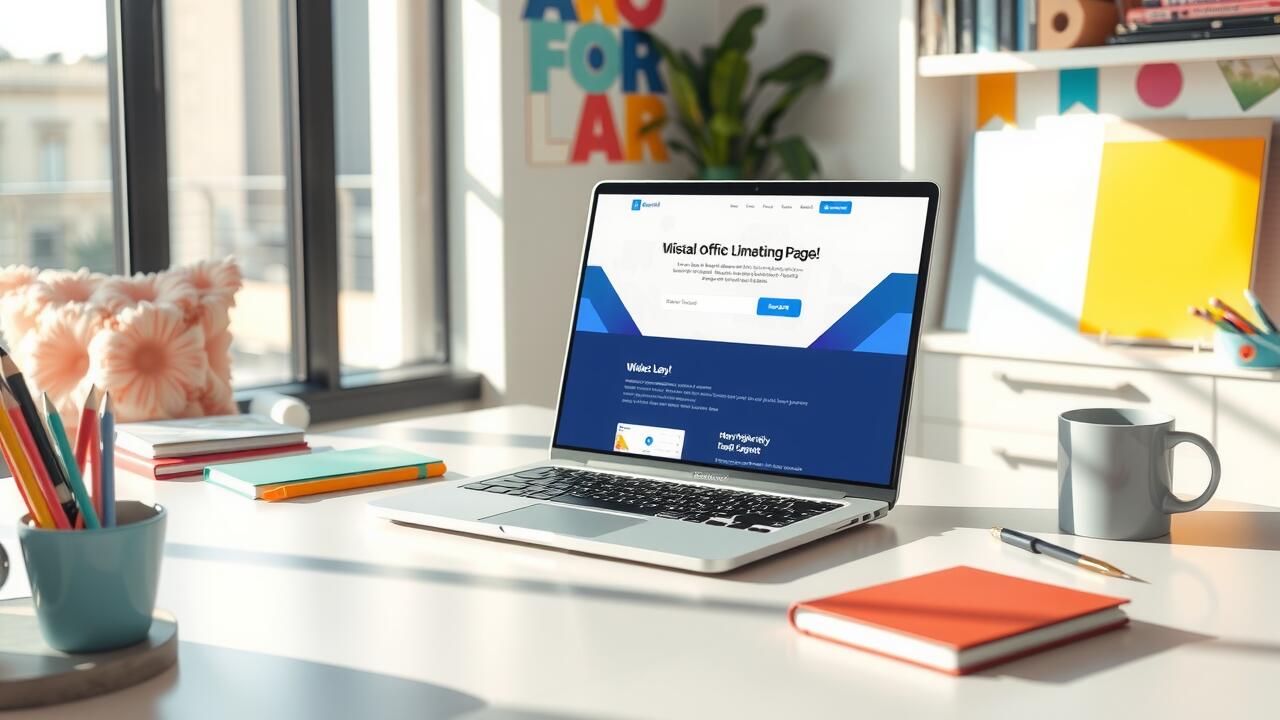What are the essential things to include in a landing page?

Benefits and Features
Highlighting the benefits and features of a product or service is crucial in capturing the attention of potential customers. Clearly present what sets your offering apart from competitors. Use concise bullet points or brief paragraphs to ensure that users can quickly grasp the key advantages. Effective use of visuals can enhance understanding and retention, making complex information more digestible.
In addition to showcasing benefits, including detailed features can help inform users about what they can expect. Specifics about functionality, usability, and outcomes will appeal to those who thorough research. Utilize a mix of text and imagery to create a compelling narrative around the product, ensuring that every aspect aligns with the needs and interests of your target audience.
Highlighting What You Offer
Clearly articulating the unique benefits of your product or service is essential. Focus on the aspects that set your offering apart from competitors. Use concise and persuasive language to communicate value. Employ bullet points or short paragraphs to make the information easily digestible. Visual aids, such as images or infographics, can enhance understanding and retention.
Customer testimonials and case studies also play a pivotal role in building trust. Real-world examples illustrate how your offering has made a difference for others. Incorporate these elements prominently to provide social proof. This approach not only attracts attention but also fosters a connection with potential customers who may resonate with shared experiences.
User-Friendly Design
A well-structured landing page prioritizes user experience, aiming to make navigation as intuitive as possible. Clear layouts, ample white space, and visually appealing elements contribute to a pleasant browsing experience. Important information should stand out, guiding the visitor’s focus to key messages and calls to action. This organization helps users feel more comfortable as they interact with the content, reducing the likelihood of frustration or confusion.
Incorporating recognizable design patterns enhances familiarity, leading to quicker understanding and engagement. Buttons and links should be easy to identify and interact with, employing contrasting colors to draw attention. Limiting clutter further assists users in absorbing information without feeling overwhelmed. Adjustments based on user feedback can refine effectiveness, ensuring that the design continues to meet the audience's needs.
Ensuring Easy Navigation
An intuitive layout significantly contributes to a seamless user experience. Visitors should find it easy to locate essential information within a few clicks. Using clear labels for menus and categories prevents confusion. A well-organized navigation menu guides users effortlessly through the various sections of the landing page.
Incorporating search functionality enhances usability further. It allows users to find specific content quickly without scanning through every section. Offering breadcrumbs is another effective strategy, enabling users to track their location within the site hierarchy. Streamlining the navigation process fosters engagement and encourages visitors to stay longer, ultimately increasing conversion rates.
Mobile Optimization
In an increasingly mobile-centric world, the importance of responsive design cannot be overstated. A significant portion of web traffic now comes from smartphones and tablets. Ensuring that landing pages look appealing and function smoothly on these devices is crucial. High-resolution images, easy-to-read fonts, and appropriately sized buttons enhance the user experience.
It is essential to test landing pages across various devices to guarantee that every element displays correctly. Quick loading times also play a critical role, as users expect instant access to content. A mobile-optimized landing page should maintain the same effectiveness as its desktop counterpart while accommodating the unique challenges of smaller screens. Emphasizing simplicity in layout and minimizing text can lead to better engagement and conversion rates.
Enhancing Accessibility on All Devices
A well-designed landing page must cater to users across various devices, ensuring that everyone can access content easily. Responsive design is crucial in achieving this goal, allowing layouts to adapt seamlessly to different screen sizes. Implementing flexible grids and images ensures that visitors can engage with your page whether they're using a smartphone, tablet, or desktop.
Equally important is the optimization of text and buttons for touch interactions, making navigation straightforward for mobile users. Clear font sizes, appropriate color contrasts, and efficient use of white space contribute significantly to an enhanced experience. Testing on multiple devices and screen resolutions helps identify any issues before the page goes live, ensuring that every user has a consistent and enjoyable interaction with your content.
FAQS
What is the primary purpose of a landing page?
The primary purpose of a landing page is to convert visitors into leads or customers by encouraging them to take a specific action, such as signing up for a newsletter or making a purchase.
Why is user-friendly design important for a landing page?
A user-friendly design is crucial because it allows visitors to easily navigate the page, find information quickly, and increases the likelihood of them completing the desired action.
How can I highlight what I offer on my landing page?
You can highlight what you offer by clearly stating your value proposition, using engaging visuals, and including concise descriptions of your products or services to capture the visitor's interest.
What role does mobile optimization play in a landing page?
Mobile optimization ensures that your landing page is accessible and easy to navigate on various mobile devices, which is essential as more users access websites through smartphones and tablets.
Should I include a call-to-action (CTA) on my landing page?
Yes, including a strong call-to-action (CTA) is essential as it directs visitors to take the next step, whether it’s signing up, purchasing, or contacting you for more information.
Related Links
Landing PagesWhat is the difference between a website and a landing page?
Top tips for creating landing pages for Google Ads
Landing page best practices